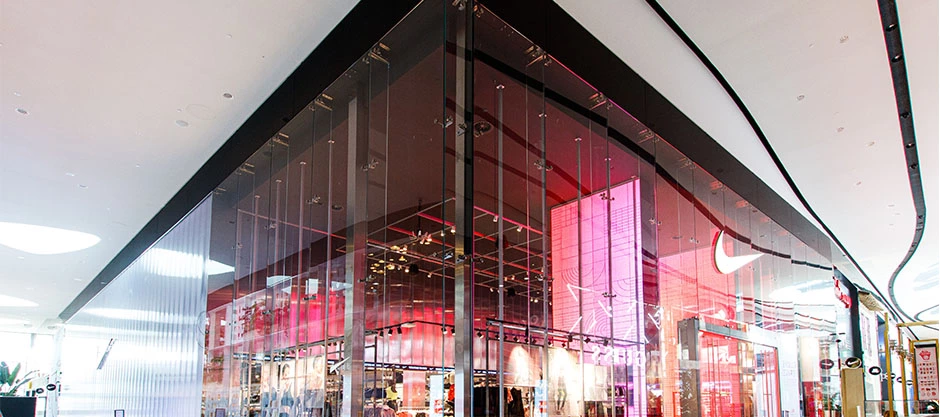In the current retail environment, creating an inviting and functional space is essential for captivating customers and enhancing their shopping experience. A retail fit-out goes further than mere aesthetics; it entails a holistic approach to crafting an environment that showcases your brand, engages customers, and increases sales. This guide will explore efficient spatial planning techniques, from understanding the significance of a well-executed retail fit-out to exploring the latest trends and innovations defining the industry in the coming years.
Whether you are launching a new store or renovating an ongoing space, grasping the retail fit-out process is crucial. By carefully zoning your store, selecting the right materials, and including your branding into the design, you can create a memorable environment that keeps customers revisiting. Join us as we delve into the key components of successful retail fit-outs, providing insightful insights for both small businesses and larger retailers looking to optimize their spaces for success.
Grasping Commercial Space Fit-Outs as well as The Relevance
Store fit-outs are the process of creating and building the internal space of a shopping area to establish an appealing environment for clients. This process includes everything from space planning to selecting resources and finishes that represent the brand identity. An efficient fit-out is vital as it can dramatically affect the perceptions customers have and shopping behavior. A thoughtfully designed area merely makes a positive initial impression and also enhances interaction with shoppers and satisfaction.
The importance of a commercial fit-out extends beyond visual appeal. A well planned store layout can facilitate a better traffic of customer traffic, making it easier for shoppers to navigate the environment and discover products. This can lead to increased revenue as customers are motivated to look around and carry out quick buys. Moreover, the correct design aspects, including lighting and color combinations, can inspire emotions and amplify the overall shopping experience.

Spending in a professional retail fit-out is crucial for retailers looking to stand out in a challenging business landscape. From enhancing space utilization to adding innovative trends in design, a effective fit-out can provide a significant ROI. By aligning the atmosphere with brand principles and customer needs, businesses can build a lasting shopping experience that encourages loyalty and encourages business growth.
The Retail Fit-Out Process: Steps to Success
To begin your retail fit-out process, it is important to begin with a comprehensive plan that articulates your vision and goals. This involves conducting detailed market research to grasp customer preferences and industry trends. Engaging with Retail Fit Out Bristol , including designers, architects, and contractors, can provide valuable insights into the feasibility of your ideas. Creating a thorough design brief will serve as a roadmap, pointing out specific requirements such as store layout, branding elements, and any technological integrations that will enhance the customer experience.
Once the planning phase is complete, the next step is to set up a clear project timeline and budget. This is where you will map out key milestones and allocate resources effectively. It is crucial to consider not only the costs associated with construction and materials but also possible hidden expenses that could arise. Regular communication with contractors and vendors will help ensure the project on track, staving off delays and guaranteeing that everyone is aligned with the project's objectives.
Finally, as the fit-out advances, monitoring the execution phase is necessary to confirm that everything ad here s to the initial design and quality standards. Conduct consistent site visits to oversee the work being done and address any issues promptly. Once the fit-out is getting close to completion, plan for a seamless transition to operations, which includes final inspections, installations, and staff training. This structured approach will establish the foundation for a successful retail environment that not only meets your expectations but also engages your customers.
Expense Management and Sustainability in Commercial Fit-Outs
Efficient expense management is key for a profitable retail fit-out. By creating a detailed budget that specifies every possible cost, businesses can avoid surprise expenses that might arise during the renovation. This encompasses not only the apparent expenses such as resources and human resources but also hidden expenses that may appear later on. Adequate planning and management of resources allow for better control over monetary results, ensuring that the fit-out keeps in line with financial plans while still meeting quality and appearance requirements.
Integrating green practices into the building phase can also provide long-term cost reductions. Selecting sustainable materials and energy-efficient fixtures can lower overhead expenses significantly. Sustainable practices not only add to lower utility bills but also improve the overall appeal of the commercial area, drawing in a growing group of sustainability-minded shoppers. Companies should evaluate investing in eco-friendly options that may have higher upfront costs but lead to substantial benefits and rewards over time.
Furthermore, green initiatives in store renovations aligns with modern market trends, making it a smart promotional approach. As shoppers increasingly favor businesses that demonstrate eco-consciousness, businesses can bolster their public perception while driving sales. Emphasizing a commitment to sustainability can create a market advantage, allowing organizations to resonate with their customer base. Overall, integrating efficient financial oversight with sustainable practices can yield both monetary savings and enhanced shopper interaction in the commercial sector.
